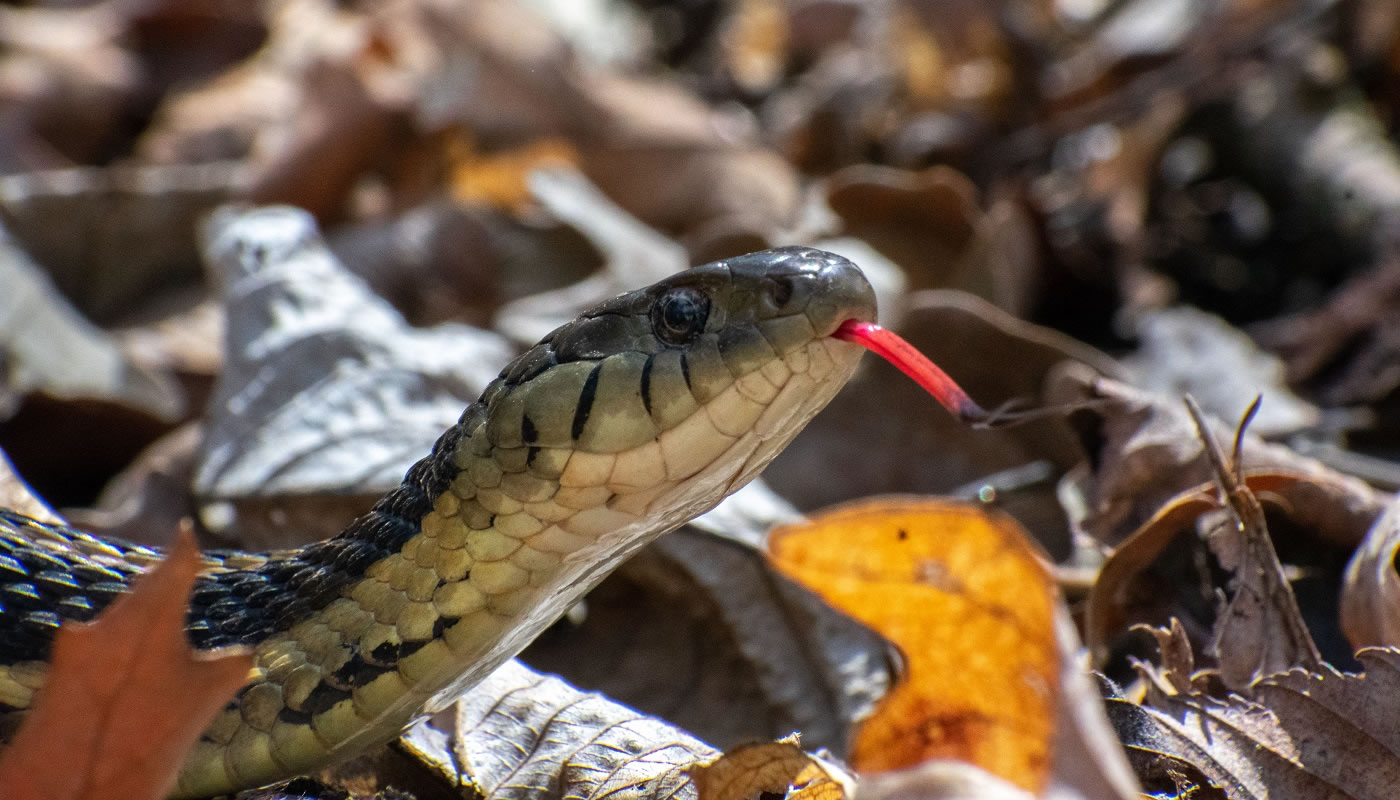Fear and fascination have surrounded snakes for centuries. In s-s-s-celebration of National Serpent Day, Little Red Schoolhouse naturalist George Klut debunked four common misconceptions about these reptiles.
Myth 1: Snakes dislocate their jaws to eat.
Snakes have two, unfused and flexible lower mandibles (jawbones) that allow them to swallow prey, sometimes much larger than their heads, whole. Their teeth are designed to hold rather than chew prey.
Myth 2: Snakes can’t hear because they don’t have ears.
Snakes don’t have ear drums, but they still have inner ears that are connected to the jawbone. Snakes can “hear” vibrations when they rest their jaw on the ground but have limited to no ability to hear airborne sounds.
Myth 3: Snakes are slimy.
Snakes don’t secrete mucous like their amphibious friends, but are covered in hard, dry scales. Snake scales are made of a protein called keratin, the same substance found in human hair and fingernails.
Myth 4: Snakes are like worms.
Snakes have a backbone, so they are vertebrates, unlike worms which lack a backbone.

